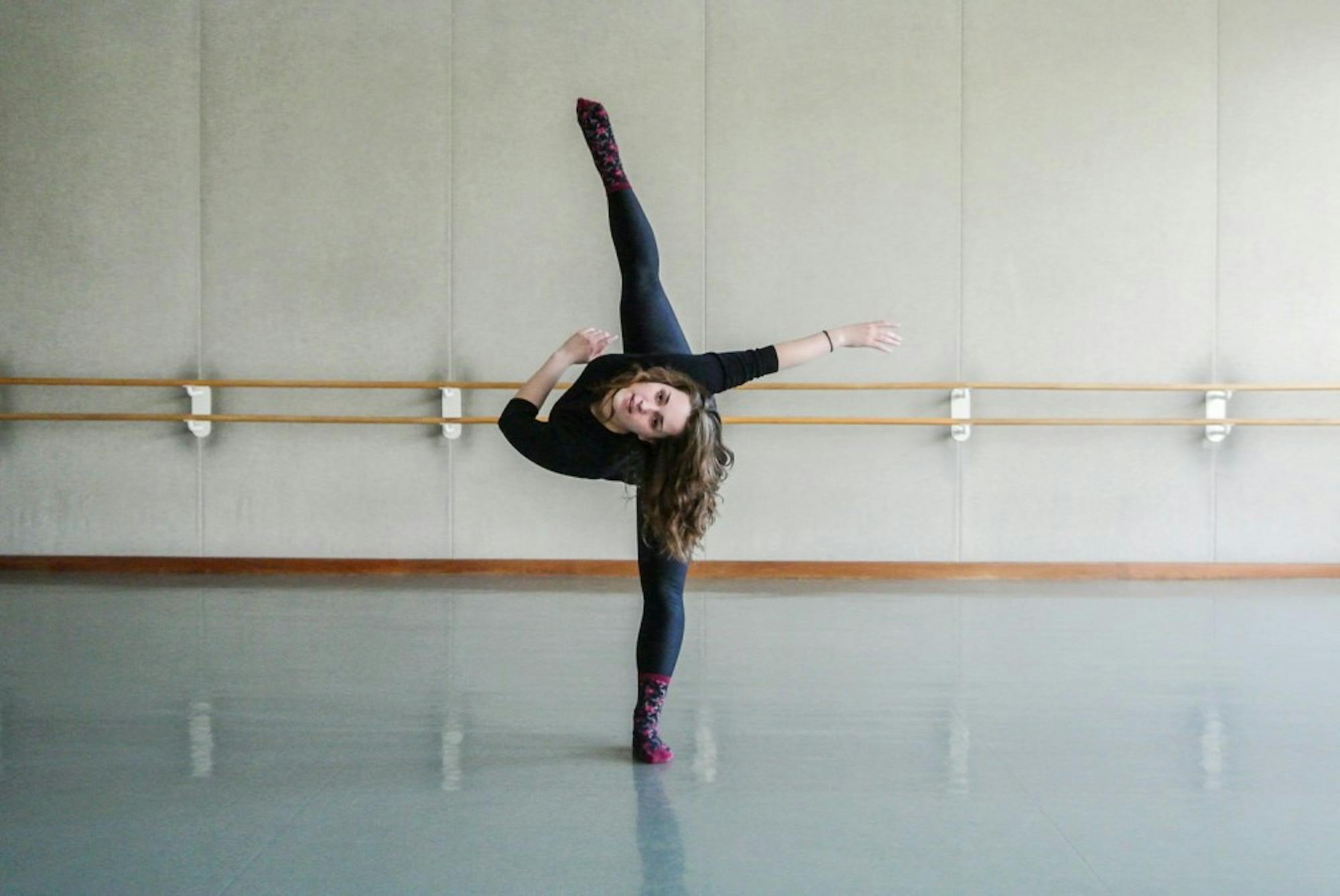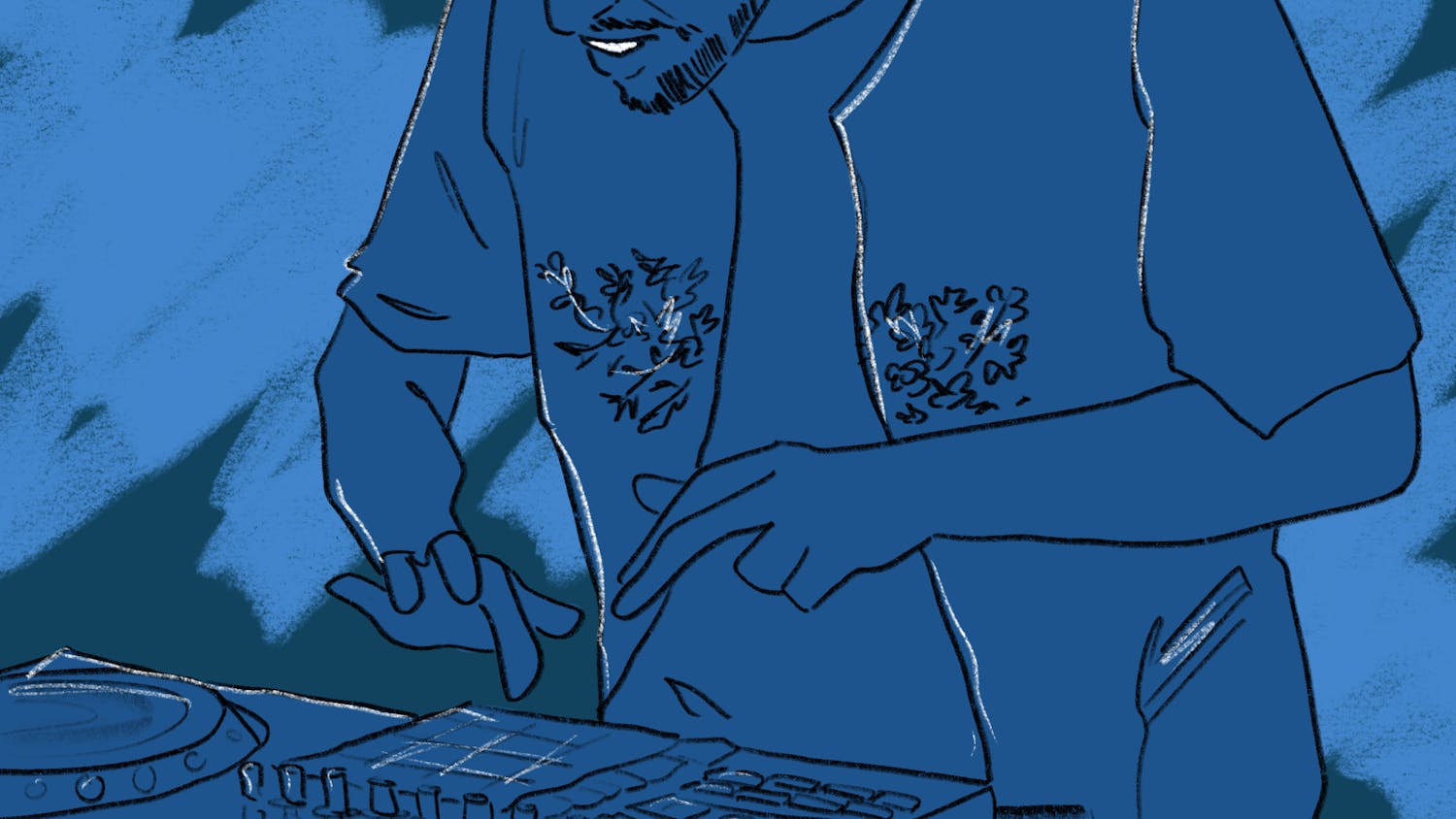When Katie Schultz ’16, now Sugarplum’s co-director, auditioned to join a dance group her freshman fall, she had a hard time choosing which to join.
“I was a competition dancer growing up so I always had a wide range of styles...I think I went into auditions thinking Sugarplum was where I wanted to be because I wanted to keep up my technique,” Schultz said. “But I had difficulty choosing between Sheba and Sugarplum.”
Schultz said she considered joining Sheba because it would mean breaking out of her comfort zone as she started college, but she valued the opportunity to maintain her dancing form with Sugarplum.
Schultz auditioned for and also joined Sheba her sophomore fall for about six weeks, but the time commitment ended up being too much to balance with school.
Schultz’s dance career began when she was three years old and she started taking dance classes.
“I did the typical ballet, tap, jazz, lyrical, a little bit of hip-hop, and then once I hit high school I recognized the need for more technical training so I also went to ballet school and took ballet classes and did special programs there, in addition to my competition stuff,” she said.
Throughout high school, Schultz said she continued this regimen and honed in on her preferred styles of dance.
“I love this thing they like to call ‘contemporary’ these days,” Schultz said. “[It’s] really hard to define because it means so many different things to so many different dancers.”
Schultz said she defines her version of contemporary to be a combination of jazz, lyrical and modern ballet. Schultz described what she grew up doing as similar to the contemporary style featured on the television show “So You Think You Can Dance” (2005).
Sugarplum has a particularly diverse group of dancers who come from different stylistic backgrounds, and Schultz said that she is the only dancer who came from her particular competition background.
“I think that I’m influenced a lot in terms of the girls who come from a strictly ballet background,” Schultz said. “They approach movement...in a much different way than I do.”
While Schultz had never choreographed before she came to Dartmouth, she said she now frequently choreographs for showcases.
“As someone who choreographs a lot, to create music that also works for them is a nice challenge, and is something I never really had to think about before coming here,” she said.
Given her background, Schultz was used to choreographers coming in from New York City or Los Angeles, handing the dancers a piece of choreography, and then leaving. Schultz said that she now finds choreography to be a great creative outlet.
“Because I don’t dance as much physically as I used to before college, I think that choreographing is a really great way to express myself and to spend time in the studio when I’m not necessarily rehearsing with the group and still get that time and that creativity in that I sometimes feel like I’m missing,” she said.
When choreographing, Schultz does not go into the piece thinking about structure or which specific group members will dance in it, but instead picks the song first and lets the other aspects follow.
“I try to incorporate everyone, but I like smaller groups of dancers,” Schultz said.
Shirley Fang ’17 said that Schultz’s attention to detail comes through in her choreography.
“I think a key difference between good choreography and great choreography is in the details, the transition from one move to the next,” she said. “Her choreography is so impressive in that it just always feels ‘right’ on your body. It incorporates an easy fluidity where the movements naturally flow into one another.”
Sugarplum co-director Shany Sun ’16 described Schultz’s dancing as “sexy” and “emotive.”
“She transitions so effortlessly between movements and styles, and watching her dance is truly an inspiration,” she said.
Fang said that the group is lucky to have Schultz as a director, thanks to her training and versatility. She said that Schultz is able to get Sugarplum members to get work done without having to explicitly ask for it.
“She is supportive, focused, dedicated, hardworking and, above all, such an inspiration,” she said.
Schultz described Sugarplum practices as very goal-oriented, with much of the time dedicated to preparing for the next show. Schultz prefers to perform on a stage, she said, although Sugarplum mostly performs in Greek spaces.
“We love the stage, but the fraternities are fun,” Schultz said. “It’s really different from what I grew up doing — the audience is so close to you, and it’s lit and you can see their faces, but it’s a blast.”
While the fraternity space limits the dancers in some ways, it gives them advantages in others, Schultz said.
“It’s a great way to increase, I think, the visibility and accessibility of dance on campus, because it’s hard to get people to go into a theater and watch a whole production,” she said. “But if they can come into a Greek space for half an hour and see something, then that’s great.”
Schultz has become involved in dance all over Dartmouth, from organizing classes for the classical ballet theater to dancing at Dartmouth Idol and is currently is doing a piece for the dance ensemble.
Schultz said her best advice for students interested in dance at Dartmouth is to become involved wherever and whenever possible.
“Get involved in a selective group if you can, or if that’s something that appeals to you,” she said. “Open ballet classes are great for people who are coming in with higher dance experience and technical training and are open to everyone on campus literally just drop in.”
Overall, Schultz feels that dance is a personal activity that can be done individually.
“You don’t need to be a part of a group to dance,” she said. “A choreographer told me that before I came here, when I was really hesitant. [He said] ‘Katie, you can dance anywhere. You just have to make it important to you.’ And I think that’s 100 percent true.”




